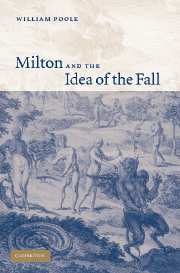Book contents
4 - The heterodox Fall
Published online by Cambridge University Press: 10 December 2009
Summary
Caution has to be exercised concerning the nomenclature of the ‘radicalism’ of the mid seventeenth century. Many religious writings we term ‘radical’ because they were written by figures well known for holding or being sympathetic to politically radical ideas, and in this sense religious and political radicalism inform one another. But, as the last chapter demonstrated, political and theological radicalism are not simply or inevitably twins, and, more subtly, some forms of radicalism can be informed or at least paralleled by movements in high culture, and vice versa. So we cannot reduce all radicalism to a kind of sui generis broth of jostling ideas, just as it will not do to freeze ‘orthodoxy’ into a rigid, inert casing. As J. G. A. Pocock stresses, the relation between heterodoxy and orthodoxy is dynamic, not simply oppositional; this is also true for the even more difficult relation between radicalism and heterodoxy. Secondly, different radicals stemmed from different roots, and one of the concerns of this chapter is to distinguish models of approaching Genesis 2–3 developed within the radical milieu. Muggletonians, for instance, vocally disagreed with Quakers on this issue.
Next, much of the material concerning this milieu derives from hostile accounts and heresiographies, and is thus unreliable, on occasion luridly so. Nevertheless, the heresiographers have their own story too, and their need to lay an interpretative grid on an initially bewildering array of phenomena itself tells us much about how observers classified what they were seeing, and what their fears were.
- Type
- Chapter
- Information
- Milton and the Idea of the Fall , pp. 58 - 82Publisher: Cambridge University PressPrint publication year: 2005

